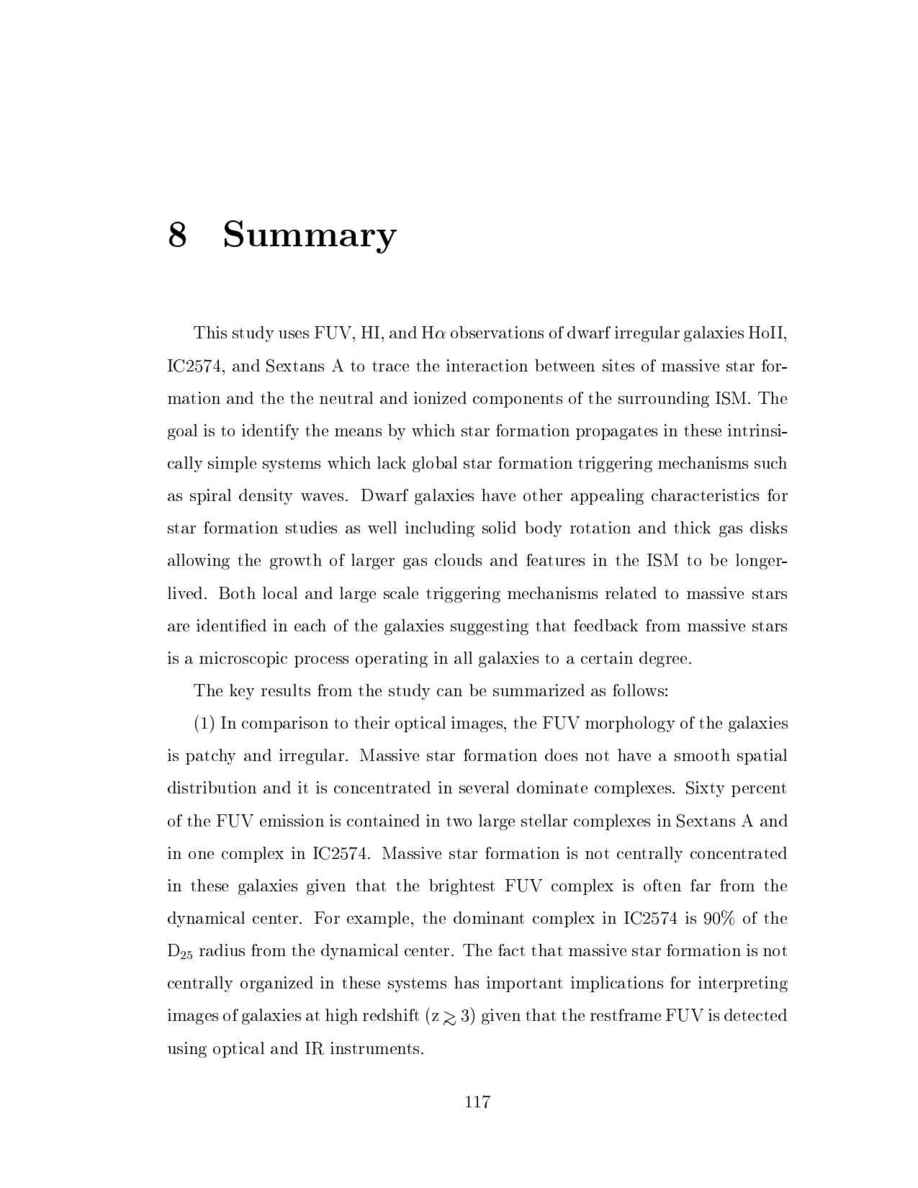Astronomical Applications Department, U.S. Naval Observatory thesis Page 131

8 Summary
This study uses FUV, HI, and H observations of dwarf irregular galaxies HoII,
IC2574, and Sextans A to trace the interaction between sites of massive star for-
mation and the the neutral and ionized components of the surrounding ISM. The
goal is to identify the means by which star formation propagates in these intrinsi-
cally simple systems which lack global star formation triggering mechanisms such
as spiral density waves. Dwarf galaxies have other appealing characteristics for
star formation studies as well including solid body rotation and thick gas disks
allowing the growth of larger gas clouds and features in the ISM to be longer-
lived. Both local and large scale triggering mechanisms related to massive stars
are identi ed in each of the galaxies suggesting that feedback from massive stars
is a microscopic process operating in all galaxies to a certain degree.
The key results from the study can be summarized as follows:
1 In comparison to their optical images, the FUV morphology of the galaxies
is patchy and irregular. Massive star formation does not have a smooth spatial
distribution and it is concentrated in several dominate complexes. Sixty percent
of the FUV emission is contained in two large stellar complexes in Sextans A and
in one complex in IC2574. Massive star formation is not centrally concentrated
in these galaxies given that the brightest FUV complex is often far from the
dynamical center. For example, the dominant complex in IC2574 is 90 of the
D
25
radius from the dynamical center. The fact that massive star formation is not
centrally organized in these systems has important implications for interpreting
images of galaxies at high redshift z
3 given that the restframe FUV is detected
using optical and IR instruments.
117
